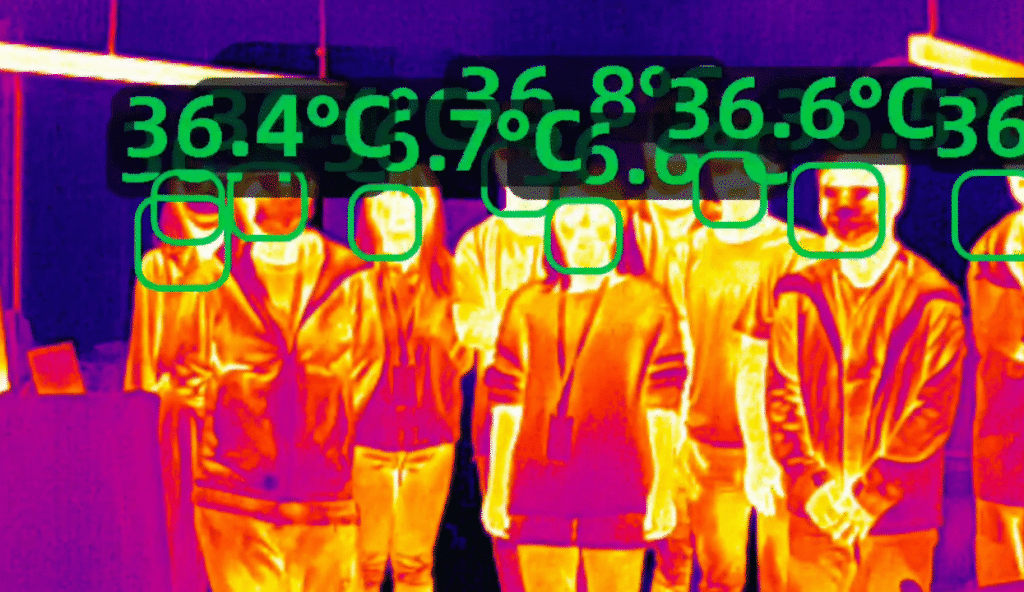One of the fundamental guarantees of successful business operation is assurance of its security. Since complete avoidance of force majeure situations is impossible, you can considerably minimize their occurrence during the work process. Equipping the workplace with surveillance systems can solve this problem. Constant monitoring allows to expand the boundaries of control and record the entire workflow.
However, the surveillance systems’ functioning may also cause troubles sometimes. Security officers can not monitor all the processes depicted on the screen, false alarm minimizing takes a lot of effort, and the lack of flexible system settings does not allow you to control the entire work area.
At least, that was before. If it remains one of the main pains for your business, the technologists can already offer you ready-made solutions.
With the aid of computer vision monitoring and artificial intelligence algorithm, modern surveillance systems have significantly developed their capabilities. Therefore, let’s analyze how the latest technologies have changed the scope of surveillance.
Real-time surveillance monitoring
Large areas control can cause a lot of inconveniences. It is almost impossible to monitor workspace security concurrently due to hundreds of processes going on at the same time. Fortunately, this problem has been already solved with computer vision and deep machine analysis systems. It reduces human resource efforts and anticipates financial loss arising from potential threats.
As a result, a sophisticated system helps increase attentiveness over an area and improve productivity by minimizing trouble cases.

Such technology is actively used in the manufacturing and construction business, where the risk of workers’ harm is high. Smart surveillance monitors employees’ activity, access control, special equipment provision and detects whether a human worker is in the potential danger zone.
Parallel real-time surveillance also optimizes warehousing operations. The system detects item positions and their further displacement, allowing better process mainstreaming. Moreover, the AI system helps operate space over great facilities. Some parts of big warehouses may be omitted from the sight zone, causing uneven item distribution. Analysis of facility detects empty space and offers better goods placement.
Another example of effective smart surveillance implementation is a parking lot. Automation of parking occupancy helps to analyze space, preventing drivers from being guided to the same place. The system can additionally use data to check if the driver has paid for the parking, monitor the personal properties and human safety, analyze how many cars are in the area and how long they occupy the lot.
Flexible system adaptation
Before the technological breakthrough in the surveillance industry, most cameras had been focusing on a percent of pixels movement capturing, without analysis of objects or actions. It caused many false positives, as the alerts could set off due to irrelevant considerations, such as falling leaves, headlights, and others. That took much time and effort to change the setup, even if the only way to do that was to restrict the view zone, leaving some areas threats vulnerable.
After powering surveillance systems with ML and AI regulations, video noise and extraneous factors are not a problem anymore, as technology can distinguish the object of interest from others after smart analysis, which triggers alerts. It means that modern systems can easily adapt to individual business goals without reducing the expansion of the view.
Special condition footage (Thermal vision & Night vision)
The thermal and night imaging, which a few decades ago were only parts of spy movies, now became part of everyday reality. It is important to point out that AI-driven products unlocked the possibility to monitor completely dark areas without compromising image quality.
The key that produces qualified night vision images is a removable IR (infrared) filter, which makes image sensors sensitive to environmental IR wavelengths and enables objects` capturing on the extremely poor light levels. Removable IR filters automatically adapt to the brightness condition, so after the sun goes down, smart regulated cameras will rely on the closest IR light and switch to night mode.

Thermal imaging is of particular relevance during the pandemic COVID-19. Augmented thermal vision could detect people with fever even in the most crowded space like an airport. Potential infection case detection considerably optimizes the work of the infrastructures. A machine learning algorithm scans bodies in the crowd by recognizing the extent of infrared light inside, which accelerates the temperature measurement comparing to manual.
What is more important – such applications guarantee the quickest inflammation detection, which means that a presumably infected person will be sooner isolated from others, reducing the risk of disease transmission.
The automotive industry is also of active thermal imaging surveillance use. A deep machine learning system can observe high-speed processes in the nighttime or the territory with poor visibility, like tunnels. Through the use of special detectors and acquisition units focused on picture analysis, parallel data acquires and displays accurate thermographic measurements.
Autonomous vehicles and Advanced Driver Assistance Systems apply thermal technology to ensure control and safety during driving by improving the reality perception in different conditions. Deep learning collects data about the environment, then the AI system process it and creates images of the current traffic situation, pedestrian movement, animals, and obstacle detection.
Except for listed thermal image applications, one of the most effective ways to ensure safety is infrared threat recognition. Thermal vision can be used to protect the facility from fire by identifying smoke or even gas leaks at industrial sites or around pipelines.
Police and airport control uses thermal scanning to find hiding burglars, define weapons and chemicals smuggled into the establishment, detect covert surveillance equipment, such as listening device.
The threat notification and data analysis
AI implementation allows surveillance systems to stay connected with the software, which guarantees the quickest alarm notification if the potential threat is detected. Furthermore, AI technology conducts a smart analysis of the objects based on the existing data. It reduces the causes of false alarms since AI technology compares captured objects with the information base, juxtaposing main features.
According to the number of features that coincided, the system assesses the level of object relevance and, based on this, concludes whether it should be considered as a potential threat.
Such applications are being actively used in the law forces, where surveillance cameras recognize villains’ faces by comparing features with the database. After the system identifies the human, it immediately connects with the nearest police station and conveys information, which allows reacting promptly.
Also, no less important is a quick reaction in the military industry. The sophisticated machine captures video data from different surveillance sources, divides it into the important and less important ones, and after processing, sends it to the human workers. It increases efficiency in crucial decision-making and leads to comprehensive activity optimization, reducing cases of military blunders due to misinformation or lack of accurate real-time data.
Behavior patterns analysis
Modern surveillance can not only analyze face features but also scan the behavior. ML models are trained to recognize action patterns that can be suspicious or differs from the others.
For instance, Walmart uses AI analytics to detect a possible threats like shooters or burglars and notify emergency responders about them. The system can also identify if the customer needs the help of the consultant or people are not keeping social distance in the queue line.
Cameras can analyze the behavior even in the most crowded places, during events, concerts, at the airport, restaurants, or just on the busy street. Cameras extract the behavior model that differs from the nearest surroundings circle and monitors their actions for a while. If they seem suspicious, the system will transmit the data to the security workers. It helps to prevent argues and fights or provide medical assistance if a person felt sick.
Conclusion
AI and ML technologies lead us to better business operations. New ways to combine existing solutions with advanced systems help to keep your work in step with progress.
Technologists could open a new world of digital transformation, so criminal or treat activity would not take control of the business.
Self-learning capabilities allow the system to be the best teammate for the security officers since monitoring in real-time mode could save lots of financial resources and thousands of lives.
Minimized error inception and constant systems’ improvement could solve some critical current issues in many industries. So do not be afraid to rely on trusted technology and reduce accidents
With our strong engineering team and R&D centers in the USA, the UK, and Italy, we deliver applications for retail, transportation, and city surveillance. Moreover, our expertise includes applications for military, airports, commercial, residential, public transit, and government establishments.
If you wish to develop an AI-powered video surveillance solution to help with your business operations, get in touch with our experts.
DeepX offers a suite of off-the-shelf products complimenting our Machine Learning and Computer Vision software development services. Our solutions can allow you to save months and sometimes years in development and implementation time, ensuring competitive advantage and unlocking new possibilities for your business.


